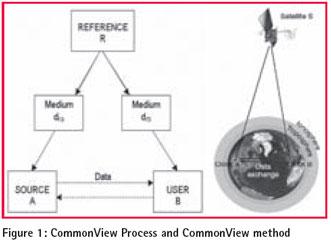Articles in the Articles Category

The XXI ISPRS Congress, 3-11 July 2008 Beijing, China
The opening ceremony of XXI ISPRS (Society for Photogrammetry and Remote Sensing) Congress was chaired by Prof Yang Kai, President of Chinese Society of Geodesy, Photogrammetry and Cartography. Mr Lu Xinse, Vice Minister of Land Resources of China, Director General …

The present study aims at developing a generic automated methodology for addressing Multi-Objective Multi- Criteria Decision-Making problems. Scientific approach which make use of analytical modeling techniques are essential to suggest suitable changes in land use and to generate action plan for an area for land and water resource development. This problem can be cast into a multi-objective multicriteria decision-making problem…
China is set to prove its determination for rapid development.
Olympic is not the sole reason but is otherwise also.
It seems to be backed by a vision and action plans.
One one hand we can see the massive infrastructure …

An earthquake, measured 8.0 on the Richter scale, struck Wenchuan County, Sichuan Province at 14:28 on May 12, 2008. The epicenter was at Yingxiu, a town in Wenchuan, as shown in Figure 1. As indicated in Figure 1, the middle segment of the Longmen Mountain earthquake zone encloses the epicenter, Yingxiu, with the Longmen Mountain zone being part of the north-south earthquake zone in China. According to records, there have been 9 earthquakes larger than a grade of 8 occurring in the north-south earthquake zone from 1739, and 7 of them were after 1897, when the greatest one was at Haiyun in 1920 and at Chayu in 1950, both of them measured 8.5.

Small and medium scale maps 1:50,000 up to 1:10,000 (possibly 1:5,000 in near future) at most can be replaced by High Resolution Satellite Imagery (HRSI), though we need ground survey of many objects which cannot interpreted from the HRSI. I agree that the cost performance to produce the smaller scale maps with HRSI would be much higher as compared with aerial photogrammetry if the cost of HRSI is not much high…

A central issue in designing complex networked systems for critical applicative domains is the possibility of keeping each node of the network synchronized with respect to a given system time scale. The problem is even more critical when the synchronization accuracy determines directly the performances of the whole system.
July 2008
International Summer Schoool on GNS
21 – 31 July
Berchtesgaden, Bavaria, Germany
http://www.munich-satellite-navigationsummerschool.org
August 2008
ESRI’s 28th annual International User Conference
August 4-8, 2008 in San Diego, California
http://www.esri.com
3rd Indonesian Geo-Information …
The soaring food price in recent months has been unprecedented.
Increased food prices could lead to increased poverty and unrest.
Even, UN call …












 (5.00 out of 5)
(5.00 out of 5)